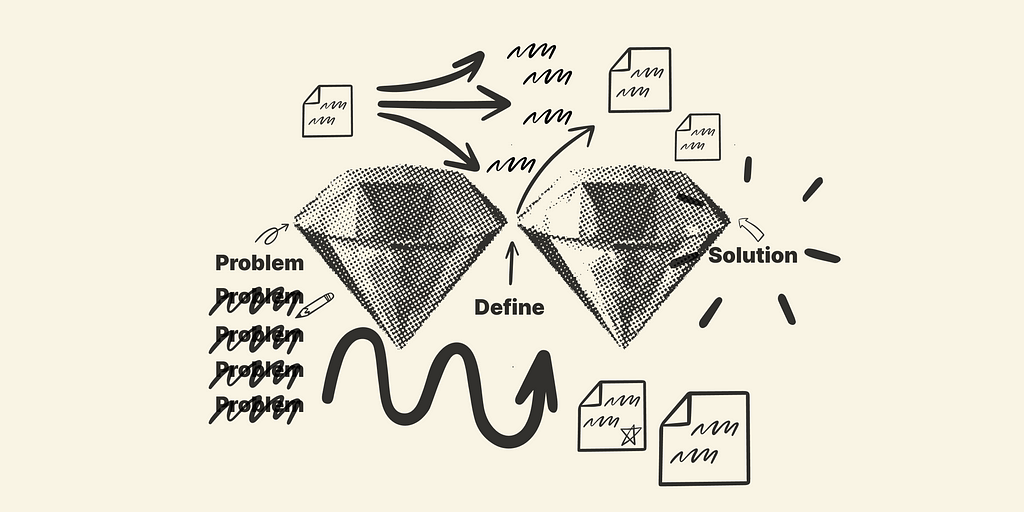
Here are two extremes. There’s always the exact same predictable path to solving a problem. For example, I can tell you exactly what steps and in what order I’ll take those steps so I can solve a simple math problem. The same process has worked for many years and will work for hundreds more.
Or,
There’s never the same predictable path to solving a problem. In soccer, you cannot predict the plays that are going to score a goal because you don’t have control of the opposing team’s defense. To score a goal, you’re reacting and working through to the unpredictable situations and challenges in front of you.
What makes the path to solving a problem predictable or unpredictable? It has to do with how much control you have over influencing factors.
On one hand, it would be much easier to land punches on Floyd Mayweather if you could control how he defends or, it would be easier to score a touchdown if you could choose the defensive plays for the opposing team. But you can’t, so in order to win a boxing match or American football game you need to respond to the specific and unpredictable challenges in front of you.
On the other hand, if you have the ability to control all the factors that influence the outcome. Whether you’re in a laboratory conducting experiments, solving a math problem, or following a cooking recipe in a kitchen, the process to achieve the desired outcome is both repeatable and predictable.
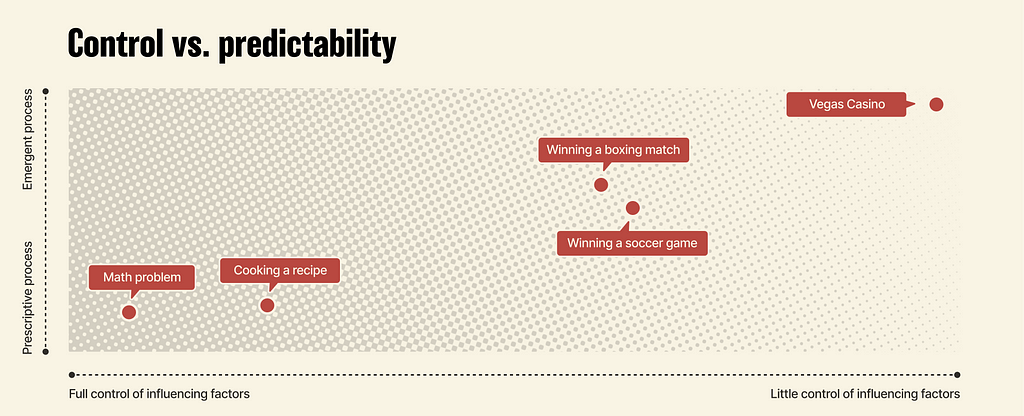
The more control you have over influencing factors, the more predictable the problem-solving process can be. The less control you have over influencing factors, the less predictable the problem-solving process can be.
Prescriptive vs. emergent
For these two types of problems, there’s a different strategy for solving them.
When you have high degree of control and predictability, like a math problem, you can be “prescriptive”. This means that beforehand, you can apply a known process with steps that have been proven to work in order to solve the problem. The prescriptive approach is centered around executing and optimizing the steps that have already been established to be effective. It involves following a predefined sequence of steps, making it ideal when consistent and predictable results are desired on a repetitive basis.
For less predictable problems that you have less control over, like a soccer game, boxing match or most real-world scenarios, its best to apply an “emergent” strategy. Emergent strategy is more about finding ways to address the unpredictable challenges and situations that you encounter along the way. It involves many characteristics of “muddling through” that Charles Lindblom coined back in 1959. Emergent approach is more about learning, adapting and experimenting incrementally to find a solution.
Design shouldn’t be a process
Designers work on real-life complex problems and not in controlled environments. We, designers, deal with a diverse set of stakeholders, influencing factors and interrelated factors. That way there’s no way to map out a process that’s going to solve complex problems; it’s too difficult to have that level of visibility into the future. The “process” often only makes sense looking backwards.
The double diamond process offers a “prescriptive” approach to real-life complex problems. It gives you specific steps to take, irrespective of the unpredictable challenges a designer often encounters. There isn’t a right way to solve a problem, especially complex ones. It’s not helpful to think of design as process of discovering, defining, ideating and delivering (or whatever version of those double diamond steps you prefer) because following those steps often does not get you closer to a solution.
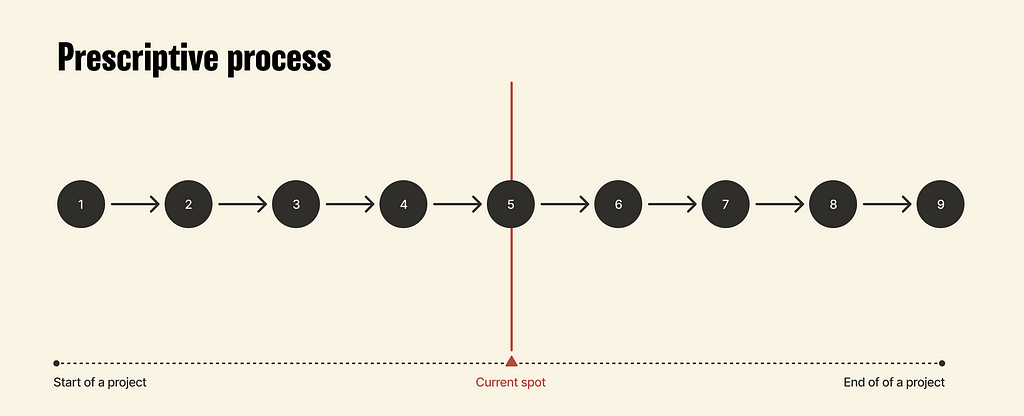
There’s no telling if the next step in the double diamond approach tackles the challenges you face, which can frequently lead to a feeling that the design tasks you’re engaged in are circling back to the original questions. Or feeling like you keep doing design activities but the process isn’t stringing together to answer the questions that address the unpredictable challenges in front of you. You end up with tons of journey maps and personas but not with the information you need to actually make good decisions about your design. Even after all the design activities you feel like you’re taking a big leap of faith with your design because you didn’t address all the unknowns.
“There’s a difference between a process and a toolbox. There’s no “right order” for applying these tools. They don’t make up a process. Each tool is a small thing used in a response to a specific challenge in a specific moment.”
Ryan Singer, Author of Shape Up on his blog Felt Presence
Doing the double diamond lacks purpose, continuity and context because the designer isn’t reacting to the unexpected and emerging questions or situations they find themselves in rather the double diamond offers answers to questions designers often don’t have.
Emergent design process
An emergent design mindset takes into account the inherited complexity designers encounter in the problems they aim to solve. Emergent design is about being critically aware of the evolving situations designers find themselves in and understanding the unknowns they encounter so they can apply the right design tool for the job. It’s about being what Charles Lindblom described as “incremental” because we cannot predict the step that helps us solve complex problems, we gain visibility to them little by little.
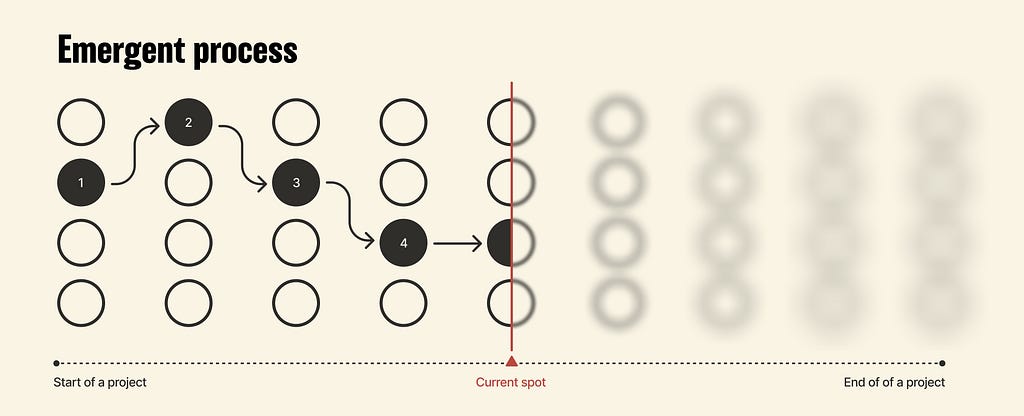
“The chain (of design activities) didn’t become more concrete over time. It didn’t start in words and end in mock-ups. There were sketches, mockups, and code spikes along the way, but they appeared in the middle of the process to resolve specific questions.”
Ryan Singer, Author of Shape Up on his blog Felt Presence
The key design skill is less about beautiful all-encompassing Figma documentation with all the kinds of journey maps and personas, or mastering a “process”. It’s about being so keenly situationally aware of what unknowns are in front of you so you can pick out what tools or design activities target them precisely.
“In general, however, I think there has to be acceptance and engagement with the fact that the creative process is fabulously unpredictable.”
Jony Ive, Chief Design Officer of Apple During a McKinsey Interview
Resources and rabbit holes
A great example of an emergent process applied to a project by Ryan Singer. https://www.feltpresence.com/small-tools-for-shaping/
Jony Ive talking to McKinsey about his ‘creative’ process and how unpredictable it is. https://www.mckinsey.com/capabilities/mckinsey-digital/our-insights/the-creative-process-is-fabulously-unpredictable-a-great-idea-cannot-be-predicted
Charles E. Lindblom on the process of muddling through. https://www.jstor.org/stable/973677
Originally published at https://tangentdesign.substack.com.
Subscribe to my Substack to get more bit-sized articles that help you gain a deeper understanding of design.
Death to the double diamond was originally published in UX Collective on Medium, where people are continuing the conversation by highlighting and responding to this story.
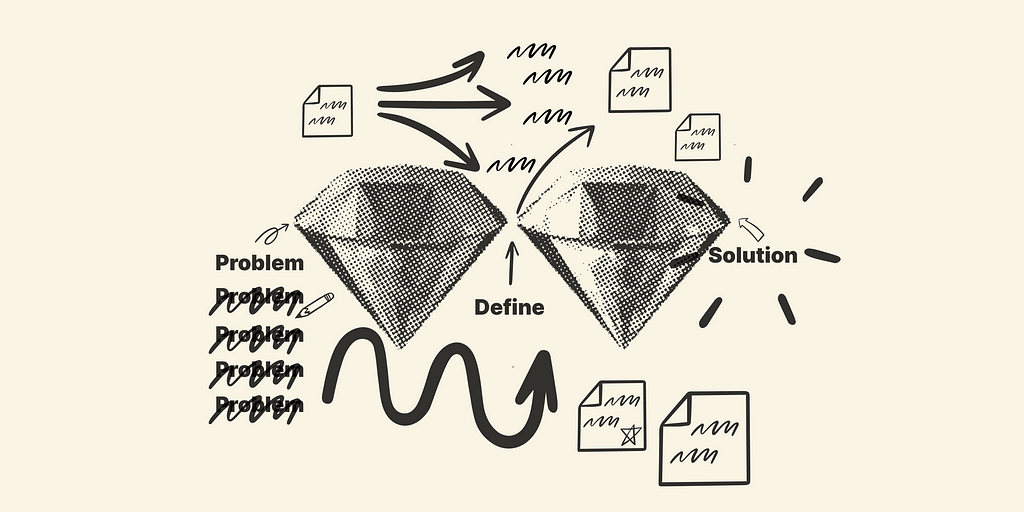
Leave a Reply